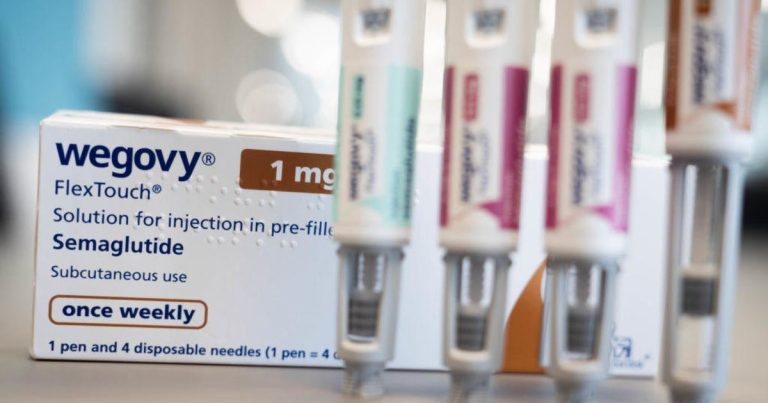
Before Wanda Smith learned the results of an autopsy following her mother’s death, she thought she knew what the summary would contain.
As a sandwich generation caregiver in the 1980s, Smith was raising her three children while also caring for her mom, whose cognitive health deteriorated while living with a diagnosis of Alzheimer’s disease.
“I took care of her in my home for six years and had her, my toddler and infant in diapers at one point,” said Smith, who lives in North County.
Smith and her siblings first detected strong signs of the disease in their mom, Sara Bridges, on Thanksgiving in 1982. During that visit, the family had just finished cleaning up after their meal when Smith recalls Bridges coming into the living room saying, “I’m so disappointed in you children. I cannot believe that you’re not helping me get the Thanksgiving meal on the table.”
“It was heartbreaking,” Smith said.
Bridges was subsequently diagnosed with Alzheimer’s disease, and Smith and her family were featured in a February 1986 issue of Life Magazine showing the way the disease impacted three different American families.

Wanda Smith’s mother Sara Bridges, pictured in an undated photo, was diagnosed with Alzheimer’s disease six years before her death in 1987, but an autopsy did not find the beta-amyloid plaques and tau tangles associated with the disease. Years later, family members participating in genetic testing found they had a genetic mutation that increases the family’s risk of frontotemporal dementia.
(Courtesy of Wanda Smith)
But the autopsy done following Bridges’ death in 1987 showed that her brain was missing the telltale signs of Alzheimer’s disease — plaques, or abnormal clusters of beta-amyloid protein fragments, and tau tangles from dead nerve cells.
“She’d been diagnosed with Alzheimer’s all this time and they were surprised because the thing with Alzheimer’s is plaques and tangles,” Smith said. “She had looked like an Alzheimer’s (patient), she behaved like it was Alzheimer’s, but it wasn’t, and so that was the beginning of the journey.”
Years later, after several relatives submitted their DNA for genetic testing, Smith’s family finally found an answer to what likely caused Bridges’ dementia — a mutation of the gene progranulin that increases the likelihood of frontotemporal dementia.
Frontotemporal dementia — also known as frontotemporal disorders — is the result of damage to neurons in frontal and temporal brain lobes, the National Institute on Aging reports.
Susan Dickinson, CEO of the Association for Frontotemporal Degeneration said the variety of symptoms and their onset varies depending on what lobe is affected first and how it spreads through the brain.
Frontotemporal dementia
Frontotemporal dementia (FTD) is a group of degenerative diseases that gradually damage or shrink the brain’s frontal and anterior temporal lobes, located in the front of the brain. These lobes are the center of many important brain functions, including language skills and the abilities to focus attention, make plans and decisions, and control impulses. FTDs include frontotemporal lobar degeneration, Pick’s disease, progressive aphasia and semantic dementia.
Early signs of frontotemporal dementia may involve the following symptoms:
Symptoms can include emotional problems, difficulty communicating, unusual challenges with completing work tasks and difficulty walking. Some people living with the condition become apathetic, start missing work deadlines, drastically change their eating habits or make extravagant purchases.
“It’s confusing, right? The first thing you think of is not that this person has a medical condition and they need help,” Dickinson said. “You think, ‘Wow, what’s going on here? I thought I knew you, I can’t rely on you anymore.’ “
In some cases, someone living with the disease without a proper diagnosis may feel alienated from their loved ones. Sometimes, couples seek marriage counseling because communication has become so difficult.
1374417
Disease onset for frontotemporal dementia tends to be much earlier than for Alzheimer’s disease. Most of the initial symptoms occur between ages 45 and 64 for the former, compared with the mid-60s for the latter.
Kristen Romea, Alzheimer’s San Diego clinical services manager, said that because those living with frontotemporal dementia tend to be younger, it means they might also be more physically fit than Alzheimer’s patients. Because of this, it’s important to consider safety measures in the home to prevent them from wandering.
“A person who’s 55 might be able to get a lot further on foot in an hour than someone who’s 80 and has Alzheimer’s disease,” Romea said.
Caregiving for someone with this form of dementia may require that special care be paid toward financial planning soon after diagnosis. Because of the way the disease impacts someone’s daily functioning, it may mean they lose their job or retire earlier than they had planned.
People with early onset dementia qualify to receive their Social Security Income early under the federal Compassionate Allowances program for people diagnosed with disabilities. Once diagnosed, call (800) 772-1213 to apply for disability benefits or visit ssa.gov/benefits/disability/apply.html.
Unlike Alzheimer’s disease — which can be confirmed through brain imaging scans and cerebrospinal fluid tests — there is not one simple test to confirm whether someone has frontotemporal dementia. That means many people lack a proper diagnosis. Younger people, especially, often are misdiagnosed with depression, schizophrenia or bipolar disorder.
“On average, it takes people almost four years to get this diagnosis, and I would point out those are only the people that finally get here,” Dickinson said.
Like Alzheimer’s disease, there is no cure for frontotemporal dementia, but there also aren’t any current treatments for the condition.
There are, however, support resources for caregiving for the condition from local organizations like Alzheimer’s San Diego and the Alzheimer’s Association San Diego and Imperial Counties chapter.
Alzheimer’s San Diego offers two support groups for caregivers of frontotemporal and other forms of dementia aside from Alzheimer’s disease, on the first Wednesday of the month at 2 p.m. and on the fourth Tuesday of the month at 5:30 p.m. For more information about these and other support groups, visit alzsd.org/services/support-groups.







